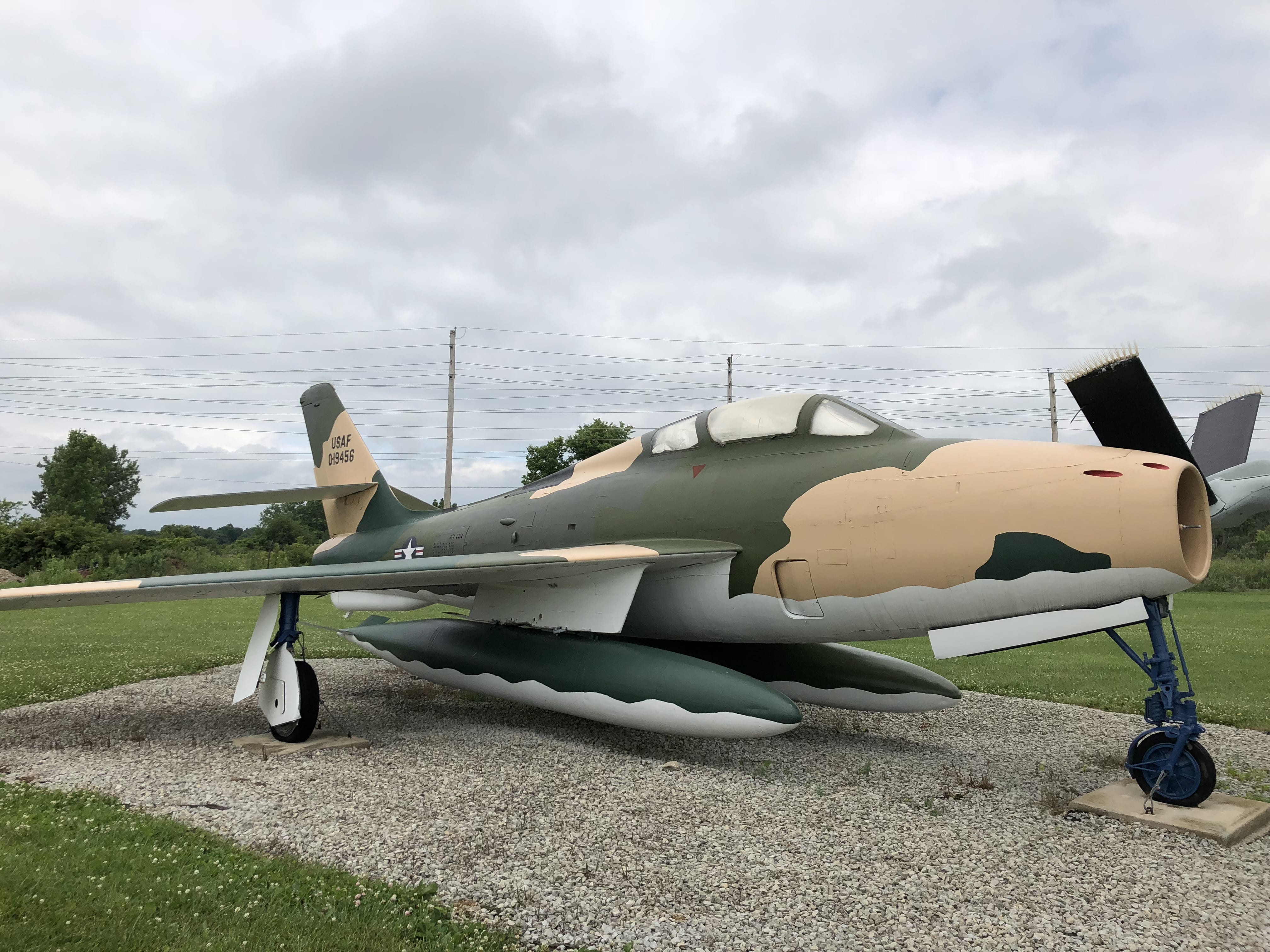NORTH AMERICAN
F-84F THUNDERSTREAK

The F-84F “Thunderstreak” was introduced in 1949, as a competitor to North American Aviation’s F-86 “Sabre”. The “F” model differs from the “C” model in that its wings are swept back 40 degrees; its tail and elevator are swept back and it has a smaller canopy and redesigned windscreen. First flown in November of 1952, it was built too late for the “F” model to see combat in Korea. Some “Thunderstreaks” did see combat while serving with England and France in the 1956 “Suez Crisis”. The “Thunderstreak” was also produced as the RF-84F “Thunderflash”. This version had an extended nose that was capable of carrying 6 cameras for use in the photo-reconaissance role. The jet intake scoops were moved from the nose to the wing roots on the RF-84F model.
Although the F-84F Thunderstreak was a modified F-84E, it only utilized 15% of its ancestor’s airframe. With the addition of swept wings and tail, and improved engines, the new aircraft matched anything flying in 1954.
The F-84F became the front line fighter bomber of NATO throughout the 1950’s. US Air National Guard F-84F’s were deployed to Europe to provide close support during the Berlin Crisis of 1961. Turkey and Greece did not retire their F-84F’s until the mid 1970’s. A reconnaissance version of the aircraft, the RF-84F Thunderflash had a lengthened nose and modified air intakes, making it the first aircraft capable of night photography. It carried fifteen cameras in the elongated nose structure. An RF-84 was also modified for testing for the fighter conveyor program. The RF-84 was carried aboard a B-36 bomber on a retractable trapeze like hook. When the bomber neared the target, the RF-84 would be released to perform reconnaissance after the attack. The little fighter was then retrieved by the trapeze and returned to base with the bomber. The program, although somewhat successful, was very tricky to perform and never caught on.
In 1964, the “Thunderstreak” was transferred to Air National Guard units while front line squadrons re-equipped with the McDonnell-Douglas F-4 “Phantom”. The F-84F was operated by Air National Guard units until final type phase out in 1971.
| SPECIFICATIONS | |
| Span: | 33 ft. 7 in. |
| Length: | 43 ft. 5 in. |
| Height: | 14 ft. 5 in. |
| Weight: | Empty: 13,645 lbs Gross: 26,998 lbs Maximum: 27,000 lbs |
| Armament: | Six .50 cal guns, 6,000 lbs of bombs and 24 rockets |
| Engines: | One Wright J65-W-3 with 7,220 lb. of thrust |
| Crew: | One (1) |
| Cost: | $ 769,000 |
| Tail Number: | 51-9456 |
| Years in Service: | 1952 – 1971 |
| PERFORMANCE | |
| Maximum Speed: | 720 mph |
| Cruising Speed: | 535 mph |
| Range: | 2,200 miles |
| Service Ceiling: | 46,000 feet |